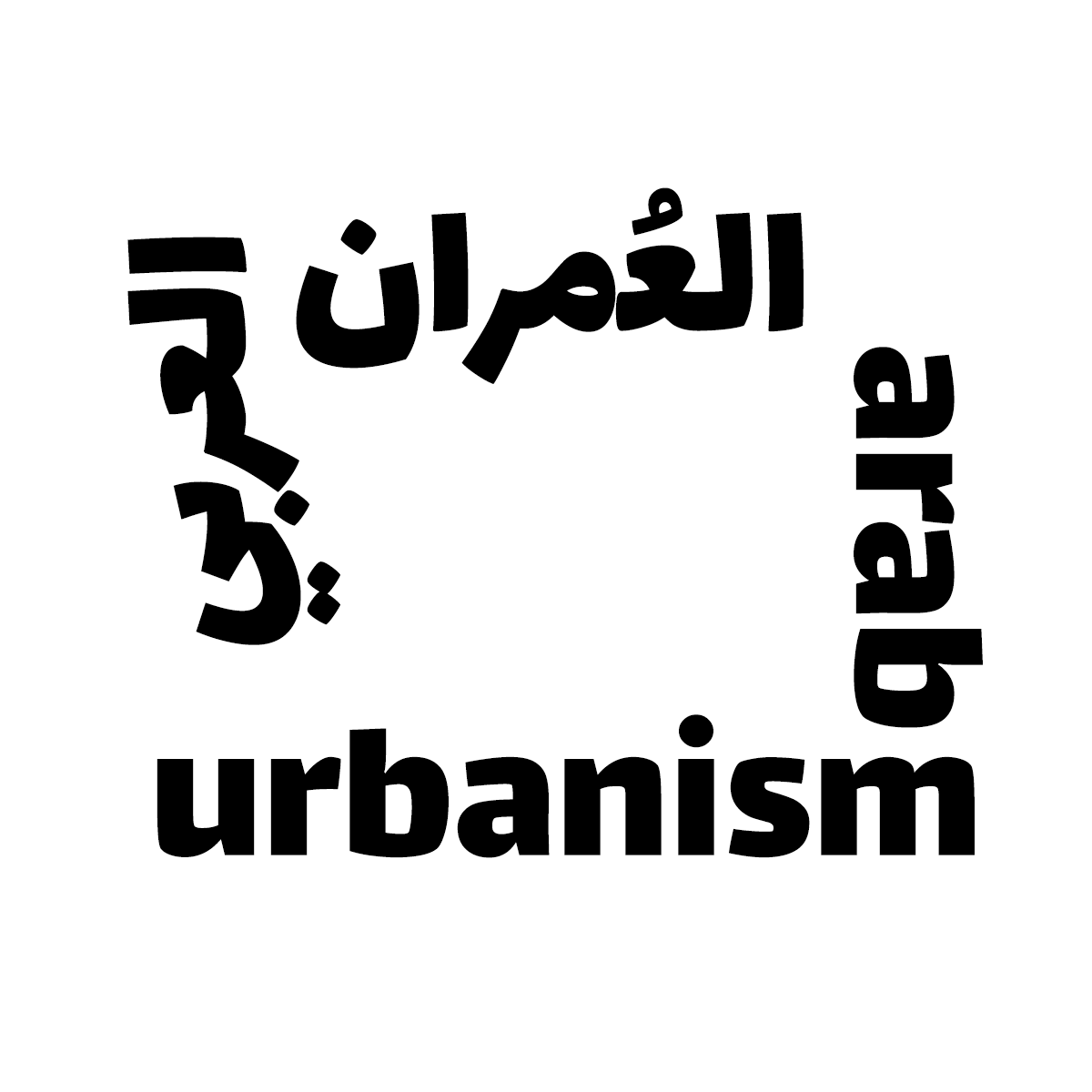The Rewriting of Palestinian Cities: Spatial Dislocations in Haifa and Akka
Najwa Doughman and Mahdi Sabbagh
Arab cities are increasingly defined by displacement and exodus. Cities across the Arab World are undergoing rapid changes in the form of exploding urban development, demolitions of heritage and violent reconstruction. Palestinian cities in the lands occupied in 1948, i.e. within Israel, have had a unique trajectory. “1948 Palestine”, as Israel is colloquially called among Palestinians, is typically ignored in discussions on the destruction of Palestinian space and land, and is rarely depicted in documentations of Israel’s settler colonial project. One could argue that this is to be expected, as 1948 cities maintain a level of normalcy not enjoyed by other Palestinian cities. They are pockets where Palestinians are citizens and enjoy mobility and access to the Israeli economy and job market. They have the option to vote, speak fluent Hebrew, and however small, have representation in the Knesset.
And yet, systemic discrimination within Israeli policies and practices permeates all aspects of Palestinian life in Israel. Although roughly 1.9 million Palestinians are citizens of Israel, constituting around twenty-one percent of the Israeli population, more than sixty-five laws discriminate against them both directly and indirectly. 1 Fourteen of these are discriminatory regarding land and planning rights. These include the de-facto prevention of the sale or transfer of public lands to any non-Jewish person, and there is no requirement to include Palestinians in planning processes. 2 Around ninety three percent of all land in Israel is designated as “public land”. This means that it is either the property of the state, the Jewish National Fund, or the Development Authority, according to Israel’s 1960 “Basic Law: Israel Lands”. 3 When the Absentees’ Property Law was passed in 1950, the properties of people who were “expelled, fled or who left the country after 29 November 1947” (“absentees”) were automatically placed under the control of the Israeli State. This law not only affected Palestinians who became refugees, but it also applied to the properties of many internally displaced Palestinians. 4
Then, in specific localities various conditions and restrictions enable the exclusion of Palestinian citizens from even leasing or renting land. In forty-three percent of Israeli towns, residential admission committees filter out Palestinian applicants on the grounds of "incompatibility with the social and cultural fabric". 5
These laws, practices, and masterplans are the basis for our argument that the erasure of Palestinian space is structural and institutionalized. The enforced notions of social and political “compatibility” and “incompatibility” are blatantly racist ideals that exclude Palestinian life and bodies from the future of their cities. In urban Palestinian areas, gentrification has become a tool to achieve this goal. This piece discusses two such cases: the cities of Haifa, and Akka. Both cities are experiencing a deliberate attempt to erase their Palestinian history and heritage through masterplanning, real estate deals, and architectural restoration. Haifa and Akka are considered “mixed cities” of Jewish and Arab residents, which face a particular type of erasure compared to other Palestinian cities within Israel that are not being discussed in this piece. As in the rest of historic Palestine, resistance to displacement persists.
Masterplans on the Coast - The Vision for European Cities
Akka’s current population of approximately 46,000 is two-thirds Jewish and one-third Palestinian. However, the Old City of Akka remains predominantly Palestinian. Compared to the rest of the city, this historic core is visibly more impoverished, with many buildings in disrepair. Palestinian members of the Knesset and Akka’s residents have regularly accused the municipality of actively working to erase the Palestinian nature of the city. In line with common practices across Israel, developers often preserve historic buildings and transform them into upscale housing and hotels. A similar fate is often met by Palestinian homes that have been confiscated: developers will renovate the structures, making them available to wealthy Israeli buyers while simultaneously displacing the narrative of their origins and rightful owners. Who constructed these buildings? What were they used for and by whom? Answers to such questions are purposely left out of the preservation narrative. Buildings are marketed as “ruins” from Ottoman or Crusader times. The words Palestine or Palestinian are absent from the literature of tourism organizations, hotels, and government websites, as is the history of how they have become “ruins”.
The Old Acre (Akka) Development Company, for instance--a government company under the Israeli Ministry of Tourism--is a prime agent of erasure. On their website, the Old City is presented as a place for “high quality, popular tourism”, yet the lack of a single mention of the inhabitants, makes it clear whom the tourism selectively serves. The lower socio-economic classes of Akka are described as a “weaker population” to be dealt with and transformed “into an economically sound population” through development plans. Objective 6.1 of the company’s “Development Strategy” lists “England, Germany, France, Italy and Spain” amongst other European countries, that allegedly, “share a vital historical connection to Acre, which should be utilized to attract tourists from these countries and hold events echoing the heritage of these countries”. 6 The development company’s nod to exclusively the city’s Crusader history requires little interpretation. Their expressed desire to transform Akka into a “European” city leaves no room for Palestinian culture and people to participate in its future.
Haifa is undergoing a different sort of rebranding effort, one leaning on its modernity and desired parallels to Euro-Mediterranean cities. In the current reincarnation of Haifa, Palestinian space constitutes about fourteen percent of the city. 7 In 2012, the Israeli National Council for Planning and Construction approved a waterfront plan called the “Haifa-Barcelona plan” that would transform Haifa’s mostly industrial waterfront into a “center for tourism, leisure, trade, and nightlife”. This plan according to then Haifa Mayor Yona Yahav was meant to “revive the lower city.” City Engineer Ariel Waterman hailed the move as “fulfill[ing] the great raw potential of Haifa’s city coast”. 8 This masterplan aims to attract an additional 55,000 residents by 2025 and weave together the downtown area with neighborhoods such as the German Colony, Bat Galim and the seaport. 9 What is purposely not mentioned is that the new “downtown” will take over the neighborhoods of Wadi Nisnas and Wadi Salib, predominantly rundown enclaves in the heart of Haifa where most of Haifa’s Palestinians reside. 10
Haifa’s municipal organization for the revitalization of downtown Haifa, named Ir Tahtit pushes a colonial narrative of “locals” (Jewish Israeli locals) renovating an “old” downtown (the Palestinian part of the city). The Times of Israel claimed that the “fear of the unknown has been one of the challenges in developing this part of Haifa, once known as a crime-ridden area that locals have long avoided” 11 . Ir Tahtit does mention Wadi Salib by name, but refers to it as an old urban fabric being revitalized by projects such as “Haifa’s artist district” and a high-end residential project called “The Quarter”. An especially hypocritical project is the “Wadi Salib Park”, a twelve acre municipal park, built on the site of demolished Palestinian homes. Ir Tahtit describes the park as “an array of traditional terraces, tailored to the character of the historic buildings that once stood on the slope”. 12
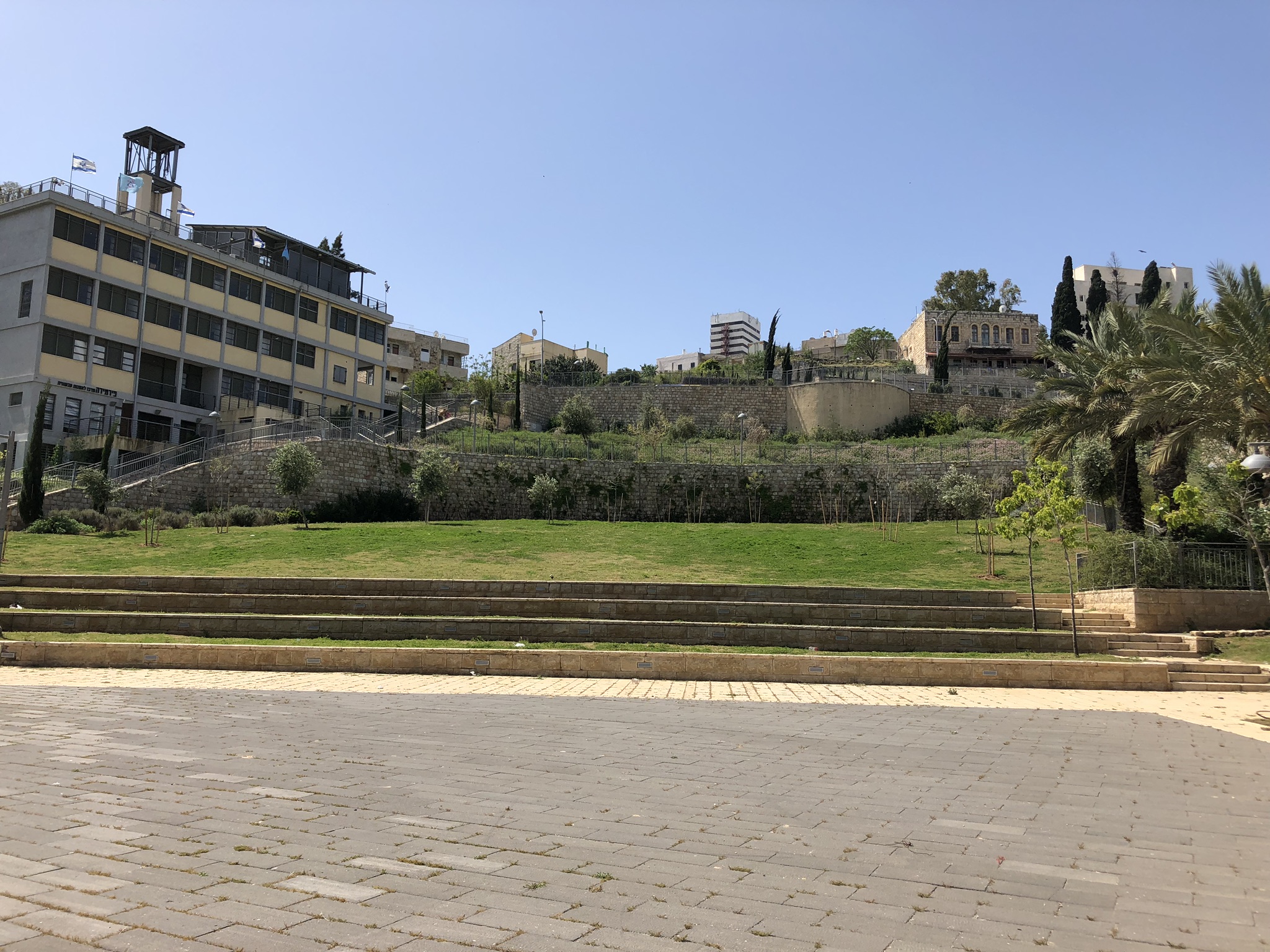
Palestinian space in Haifa constitutes residue; it is the space of those who survived, those who repopulated, and those who worked tirelessly to assert the Arabic language in the city that once was. As the “European” future envisioned for these cities becomes imminent, the necessity of preserving a collective Palestinian memory grows in urgency.
Case Studies: Akka and Haifa
Akka
Saba El Sayyed, is a community organizer originally from the village of Taybeh in the Triangle region. She has lived in the Old City of Akka since marrying her husband Waleed El Sayyed in 1991. Waleed was born and raised in the family home referred to as El Sayyed House, where Saba and Waleed reside today, above their recently opened small bed and breakfast. Theirs is a story of affirming a presence against the backdrop of Israeli strategies of elimination and exclusion.
There are two Israeli governmental agencies that control Akka’s properties: the Ministry of Housing, which created housing projects, for mostly Jewish immigrants; and the Development Authority, an agency responsible for the historic buildings of the city which are mostly inhabited by Palestinians. 13 This administrative division allows for separate housing and land-ownership policies, based on ethno-religious lines. Although the historic houses of the Old City of Akka were owned by Palestinians prior to their expulsion in 1948, the state has seized the houses under the Absentee Property Law and now rents them to Palestinians such as the El Sayyeds. Palestinians are considered “protected renters” (mosta’jireen mahmiyeen), meaning they were either renting the property prior to 1940, or paid a “key fee” to acquire this status. 14 This allows them to rent their apartment for one generation; in other words, the Sayyed family can transfer the title to their children, but the policy of the Development Authority prevents the third generation from remaining in the property, making it mandatory to return it to the state. 15 The tenants are also required by law to pay the exorbitant costs of maintaining and repairing their rented apartments, often reaching tens of thousands of shekels. 16 When they cannot keep up with these payments, some tenants have taken the Development Authority to court, but many are also forced to vacate the property. 17 Both laws contribute to the Development Authority’s explicitly stated future goal “to promote and market leasing rights in buildings and reduce the scope of protected tenancy”, which, in this case, means reducing the protection of Palestinian tenancy. 18
Around the year 2002, the El Sayyeds’ downstairs neighbor notified them that he and his family were moving out. There had been rumors circulating about wealthy investors focusing on the Old City of Akka, with a vision to transform it into a luxury tourist destination for Israelis and Europeans. El Sayyed claims that some, including her husband, found it difficult to believe that people wanted to invest in Akka at the time, because Akka felt unsafe, poorly lit at night, dirty and notorious for rampant drug use.
However, Akka’s mayor Shimon Lankri, boasted of his success at reversing migration trends and getting a greater number of Jewish Israelis to move to Akka. 19 This atmosphere pushed the El Sayyeds’ to purchase the title to rent their departing downstairs neighbors’ apartment, as a way to prevent their own potential displacement. It was important to them to preserve the Palestinian character of their building and the city, and they feared that Akka would become an urban core void of Palestinian people. El Sayyed dreamed of having a space to invite Palestinians from abroad to visit and experience Akka as a unique Palestinian city. Around 2011, the municipality began to release certain buildings for sale. The El Sayyeds used all of their savings to purchase their apartments. They saved money, renovated the downstairs apartment piece by piece, and turned it into a small bed and breakfast. El Sayyed emphasized that they were “lucky” to have the option to purchase, as many Palestinians that did not live in the buildings selected for privatization, are still treated as perpetual renters, “guests” in their own city.
According to El Sayyed, other buildings in the Old City suffered a different fate. Khan el Umdan is a well-preserved two-story historic building, positioned around a large open courtyard. In the nineteeth century, the building was used to house international traders and merchants. In 2008, it was sold to the Orchid Hotels Chain, owned by the Israeli-American Nakash family, in an exclusive auction held by the Israeli Lands Authority. The issued tender stated that the “auction is only for candidates who will receive a recommendation from the Ministry of Tourism, when the office will examine the suitability of the project plans” 20 . The site will now be developed into the Setai Hotel of Akka by 2023. Word spread that the Orchid Hotels Chain was looking to purchase additional properties adjacent to Khan el Umdan, and to expand the territory of the hotel. Many small signs saying “Not For Sale” were put up by Palestinian residents around the Old City.
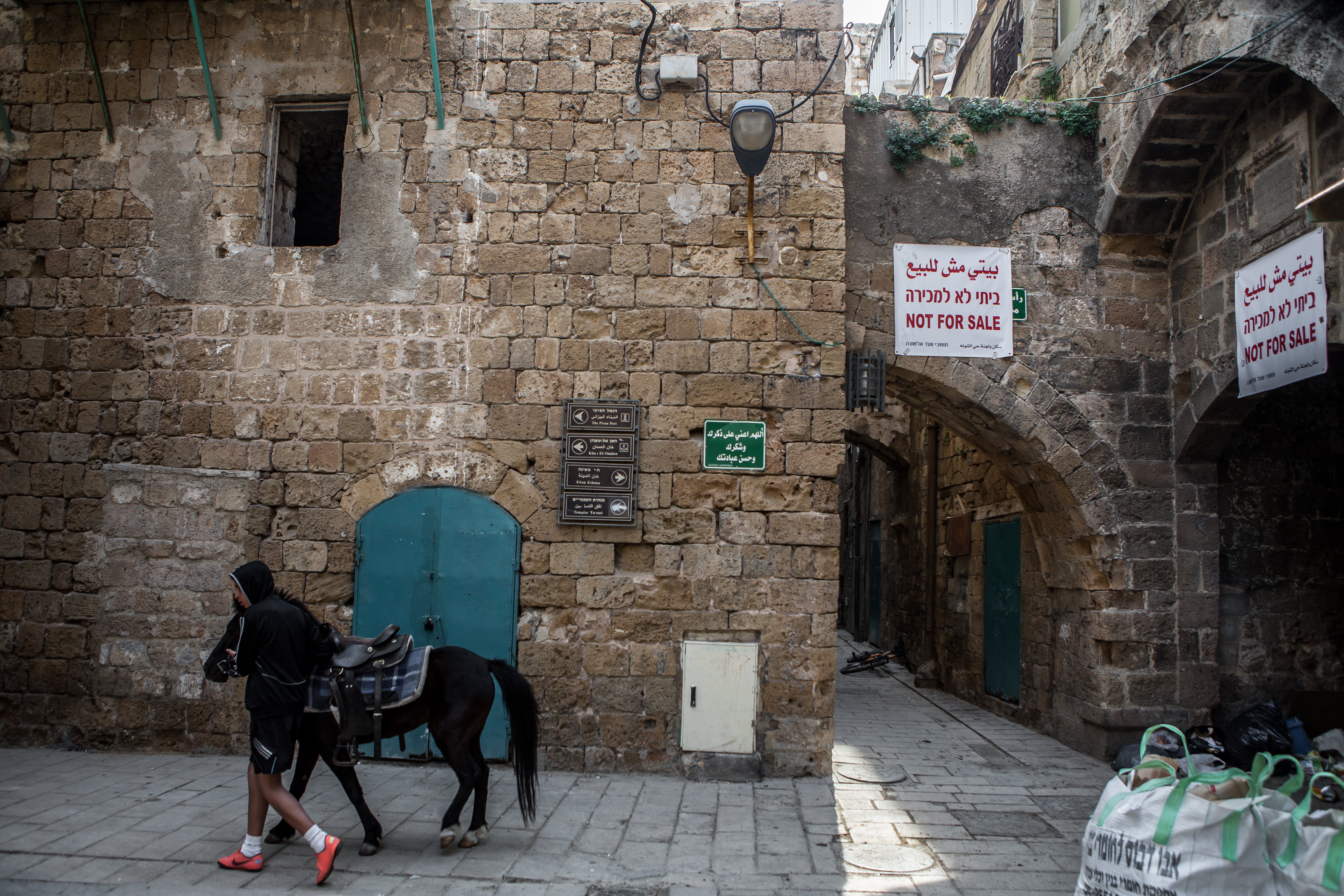
Besides the state’s problematic vision of “upgrading” the Old City through luxury hotels and cause skyrocketing prices in a dilapidated section of town, Khan el Umdan is a significant historic building within a UNESCO heritage site. 21 The building’s open space has already been sealed off, and will likely not be open again as it is transformed into restricted space, only accessible to hotel guests. Saba also mentioned that although it was auctioned off by the Israeli Lands Authority, this property belongs to the Waqf al Islami, a religious endowment, which had intended for the Khan to be a public space for the community. The community demonstrated against the sale, and legal action was taken by the Committee for the Waqf Properties, to no avail. 22
The preservation of the skeleton of Khan el Umdan is rendered meaningless when it is separated from the social and political context in which it was built, and in which it was then seized, against the desires of those to whom it belongs.
Haifa
When walking through Haifa’s central neighborhood of Wadi Nisnas, one experiences a truly Palestinian city. Arabic is spoken on the streets where signs, also in Arabic, display the names of Palestinian owned businesses. But a short walk from Wadi Nisnas is Wadi Salib, a break in the urban fabric. The street life abruptly ends and a large, mostly vacant space unfolds. The houses of Wadi Salib, a Palestinian neighborhood that was depopulated in 1948, haunt Haifa’s urban heart. The structures are boarded up, surrounded by rubble: a memorial to Palestinian dispossession, or to Israeli hegemony. Buildings jolt out of the ground like gravestones. It is rare for a Palestinian neighborhood to remain built and visible after the Nakba 23 . Many Palestinian neighborhoods, towns and villages were entirely flattened, some built over, others planted over. Wadi Salib’s remains are quite unique in their architectural detailing and stylistic nods to other Mediterranean cities. Palestinians who visit Wadi Salib talk of how it “looks” and “feels” like the Nakba, attributing a lot of attachment to the site. Many in Haifa would like to see Wadi Salib formally become a site of remembrance. But a different agenda is in store.
Similar to Akka, the overall vision to Europeanize Haifa and “upgrade” the city is realized through private real estate companies and investors who are aligned with their vision for the city’s future. They are encouraged to buy, sell, and invest, a process that excludes Palestinians from start to finish. For instance, a brokerage firm going by the name of Home Land has been posting placards, signs, and fliers, advertising their desire to buy properties in Wadi Salib and Wadi Nisnas. Self-described as a firm that focuses on “distressed areas” that were made from “simple stones,'' Home Land claims that it then turns those stones into “diamonds”. 24 Residents claim that Home Land is attempting to purchase large swaths of land in majority Palestinian neighborhoods in downtown Haifa, where they have no say and no knowledge of those involved in the transformation of their urban fabric.
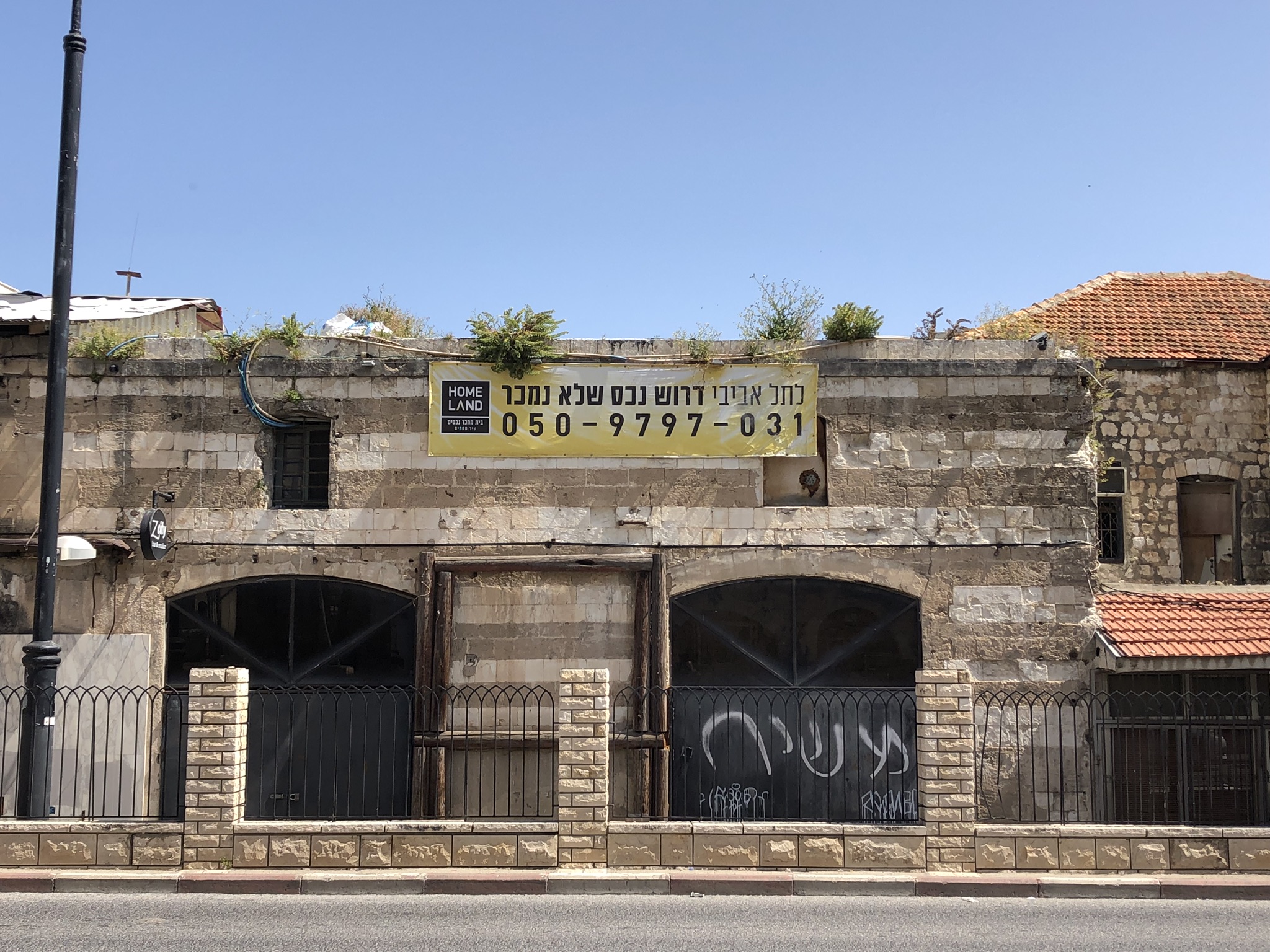
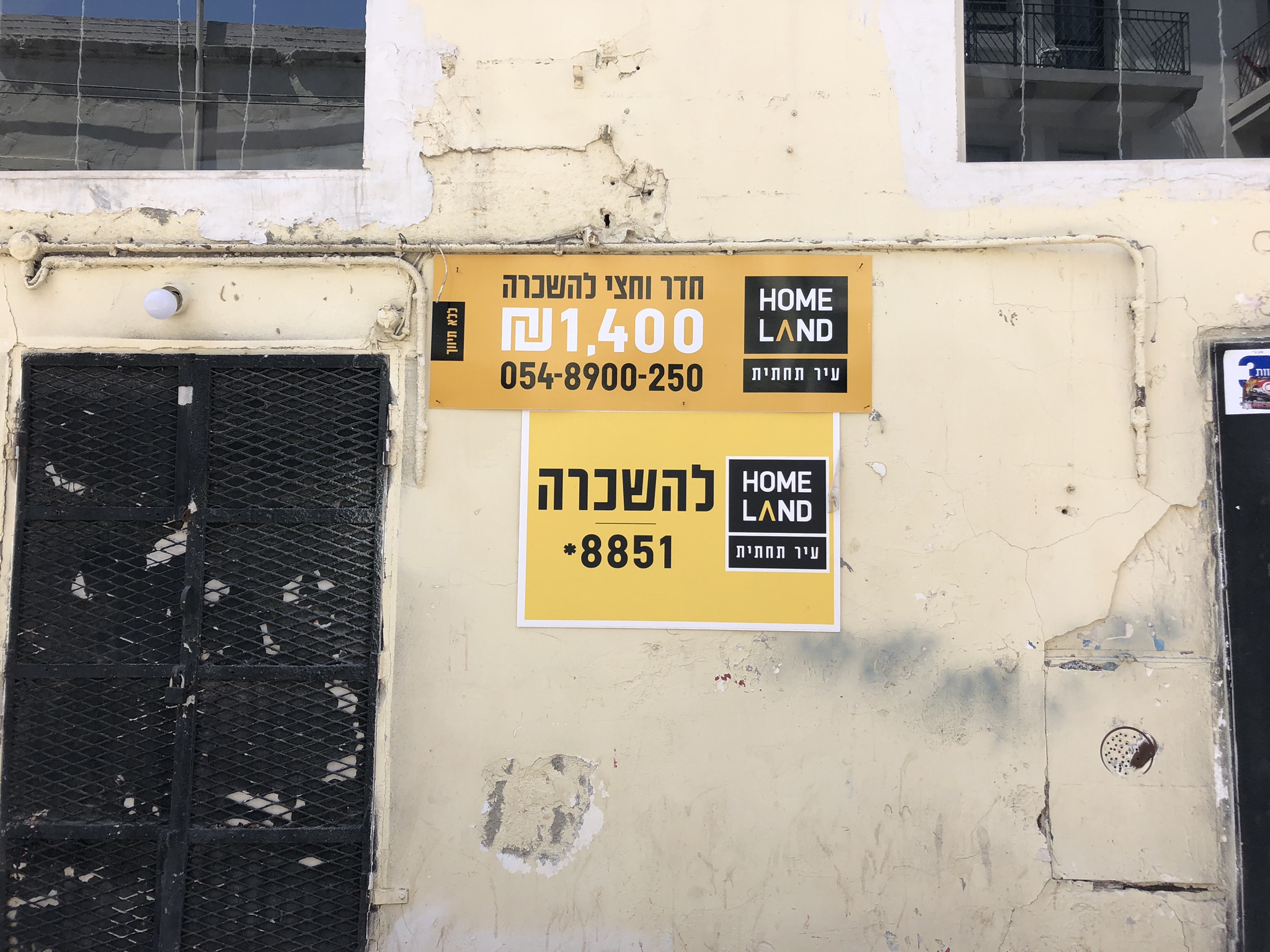
Meisa Irshaid, a Palestinian lawyer who works in Haifa, contacted Home Land to inquire about buying an old house or apartment in Haifa. They said that although they typically buy houses, renovate them and then sell them, they currently have nothing in Wadi Salib to sell. 25 This seemed peculiar, given what we witnessed on the ground. Home Land’s fliers and posters litter the facades of many buildings in downtown Haifa. Aya Abed, another Palestinian resident of Haifa, had also heard of Home Land. Abed contacted the company after seeing a large sign advertising a storefront property for rent in Wadi Salib. She was told that the property was no longer for rent. Abed says that the Home Land banner is still up, years later. The shop remains empty. 26 Such experiences are common for Palestinian renters in Israeli cities. This phenomena was even illustrated in Elia Suleiman’s film “Chronicle of a Disappearance”, in which a young Arab woman is searching for an apartment in West Jerusalem, only to be told by the Israeli landlords that they do not rent to Arabs. 27 According to a 2018 study by the Hebrew University of Jerusalem, discrimination against Palestinians in the Israeli housing market is widespread, and landlords in Israel are not legally banned from discriminating based on religion or ethnic origin. 28
Abed’s father co-owns a small property in Wadi Nisnas. It is an old building, in need of renovation. But property taxes are high, and the rent her father is able to charge is low. He gets many calls from Israeli real estate companies who are looking to buy and willing to pay him a high price. Abed tells us that such offers are tempting especially because many of Haifa’s Palestinians struggle to make ends meet. Her father, to this day, has refused to sell but she worries that this might change in the future, and has even considered buying it from him, herself.
Many of Haifa’s residents feel helpless in the face of real estate companies and developers’ aggressive tactics. Companies like Home Land enter Haifa’s neighborhoods with the purpose of making a profit. They have no interest in maintaining Haifa’s Palestinian character or population, or including Palestinians in the future of the city.
Abed says she feels like Haifa is “gone” when she sees how the city has changed over the years. She ponders whether Palestinians should also buy in such developments perhaps as a way to reclaim land. But the reality of the Israeli market for the Palestinian citizens who do have access to it is that the majority cannot afford to repurchase land and could never compete with the offers coming in from wealthy Israelis and international investors.
On-going Resistance to Erasure
In the case of Akka and Haifa, as well as many other cities across historic Palestine, there is a sharp break between identity and citizenship. Full citizenship rights are conditional on ethnic, racial and religious affiliation. Masterplans and land transactions pursued and encouraged by the Israeli settler-colonial state advance the stripping away of citizens’ rights to their cities. Although their buildings are standing, Palestinians struggle not only to maintain ownership of their homes, but also to retain the narratives and history associated with them. In this light, we find it imperative to document stories such as the ones described in this piece. We have witnessed small acts of resistance by Palestinian residents to fight against displacement and erasure, ranging from distributing flyers and hanging posters that state that houses are “not for sale,” or publicly naming agents who attempt to expropriate spaces in Palestinian neighborhoods. Residents are investing in their own communities and there is a real sense of urgency to ensuring that their build environment remains theirs.
Haifa for instance, has become known as a Palestinian cultural center within Israel, with many young people spearheading projects aimed at encouraging the use of the Arabic language in the arts, literature, and on the street. The success of communal agents such as the Arab Cultural Association and the Khashabi Theatre in Haifa testify to a strong desire for a cohesive, politicized society. Aya Abed’s father’s refusal to sell his land is an age-old form of resistance that many Palestinians have employed and take pride in.
Since 1992, Saba El Sayyed has been a member of the Akka Women’s Association. One of their initiatives raises international funds to help women in Akka to restore and refurbish their historic homes. They believe that even through small donations, families will be able to keep up with the hefty and unjust costs charged by the Akka Development Authority, to preserve their buildings and persist; to stay and have a footprint in Akka’s future. Additionally, there is a group composed of Akka’s youth called The Group of 5000 that focuses on creating connections with their city. El Sayyed says that although these initiatives are relatively new, she feels hopeful that they will gain traction and grow.
Solidarity
Although Palestinian cities are under siege, communities remain cohesive. Palestinians have in fact consistently adapted to new difficulties in the form of discriminatory laws and planning policies, and maintained resilient communities that against all odds have found ways to stay put. As urbanists we are tempted to offer tactful, elegantly drawn solutions for healthy environments and urban justice. But in the case of Palestinian cities, it is best for urbanists to witness, follow the lead of Palestinians on the ground, and hold themselves and others accountable to refuse to participate in projects of disposession and erasure.
Authors
Najwa Doughman is an urban planner and architect based in New York City. She has worked on community planning, transport planning and post-disaster reconstruction projects in a wide range of contexts including Brazil, Palestine, South Africa and Lebanon. She holds a Master of Urban Planning from New York University.
Mahdi Sabbagh is a practicing architect and urbanist in New York City. He co-curated Palfest, the Palestine Festival of Literature in 2019, around the theme of Urban Futures: Colonial Space Today. He has since joined the Palfest organizing team. Mahdi was co-editor of Perspecta 50: Urban Divides (MIT Press, 2017), and his work has been published in the Journal of Public Culture, the Jerusalem Quarterly, and Jadaliyya. He holds a Masters in Architecture from Yale.
-
https://www.vox.com/world/2018/7/31/17623978/israel-jewish-nation-state-law-bill-explained-apartheid-netanyahu-democracy ↩
-
https://www.adalah.org/en/law/view/528 ↩
-
https://land.gov.il/en/Pages/AboutUs.aspx ↩
-
https://www.adalah.org/en/law/view/538 ↩
-
https://www.aljazeera.com/indepth/opinion/2016/02/israel-racism-law-160224111623370.html ↩
-
http://www.akko.org.il/en/Acre-Tourism-Development-Strategy ↩
-
https://www.theguardian.com/cities/2018/apr/19/haifa-is-essentially-segregated-cracks-appear-in-israels-capital-of-coexistence ↩
-
https://www.ynetnews.com/articles/0,7340,L-4250979,00.html ↩
-
https://en.globes.co.il/en/article-new-haifa-outline-plan-55000-more-residents-by-2025-1001159957 ↩
-
Wadi Salib is a neighborhood that was depopulated in 1948. Many of its structures remain but the doors and windows are cemented up. ↩
-
https://www.timesofisrael.com/downtown-haifa-goes-upscale-with-urban-makeover/ ↩
-
-
http://www.badil.org/en/publication/periodicals/al-majdal/itemlist/user/120-eyad-barghouti.html ↩
-
https://www.kolzchut.org.il/ar/%D8%B3%D8%A7%D9%83%D9%86_%D9%85%D8%AD%D9%85%D9%8A ↩
-
Interview, Saba El Sayyed, October 13, 2019 ↩
-
https://www.kolzchut.org.il/ar/%D9%82%D8%A7%D9%86%D9%88%D9%86_%D8%AD%D9%85%D8%A7%D9%8A%D8%A9_%D8%A7%D9%84%D8%B3%D8%A7%D9%83%D9%86 ↩
-
http://www.akkanet.net/Article-Mobile.php?ID=27716 ↩
-
http://www.iaa-conservation.org.il/article_Item_eng.asp?subject_id=31&id=103 ↩
-
http://www.tarabut.info/en/articles/article/Colonizing-Acre/ ↩
-
https://electronicintifada.net/blogs/sarah-irving/new-campaign-save-historic-palestinian-building ↩
-
https://itn.co.il/news/hotels/orchid-chain-to-establish-hotel-at-khan-al-umdan-in-acre/ ↩
-
https://www.middleeastmonitor.com/20140210-protest-in-acre-against-expulsion-and-judaisation/ ↩
-
The Nakba, or “the Catastrophe” refers to the events of 1948 that established the state of Israel. More than 700,000 Palestinians fled or were expelled, and hundreds of Palestinian towns and villages were depopulated and destroyed. ↩
-
Home Land website. ↩
-
Interview, Meisa Irshaid, October 10, 2019 ↩
-
Interview, Aya Abed, October 11, 2019. Name modified at the request of the interviewee. ↩
-
Elia Suleiman, “Chronicle of a Disappearance”, 1996 ↩
-
2018 study by the Hebrew University of Jerusalem indicates Jewish sounding names were 49% more likely to get a response to a housing inquiry than Arab sounding names. https://in.bgu.ac.il/en/humsos/Econ/Documents/seminars/abstracts/Dec%2027-18.pdf
